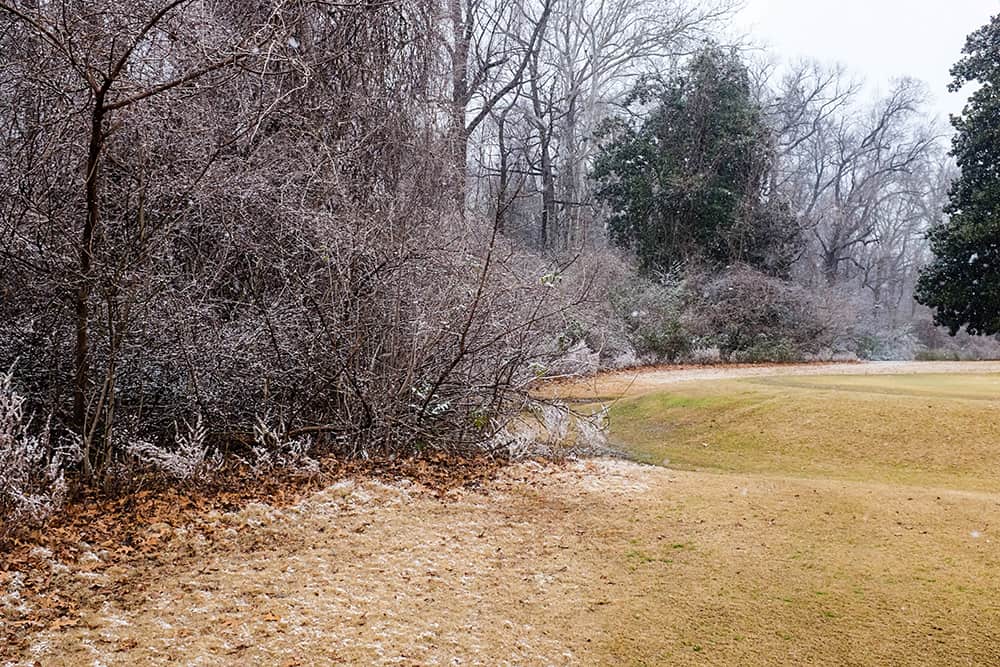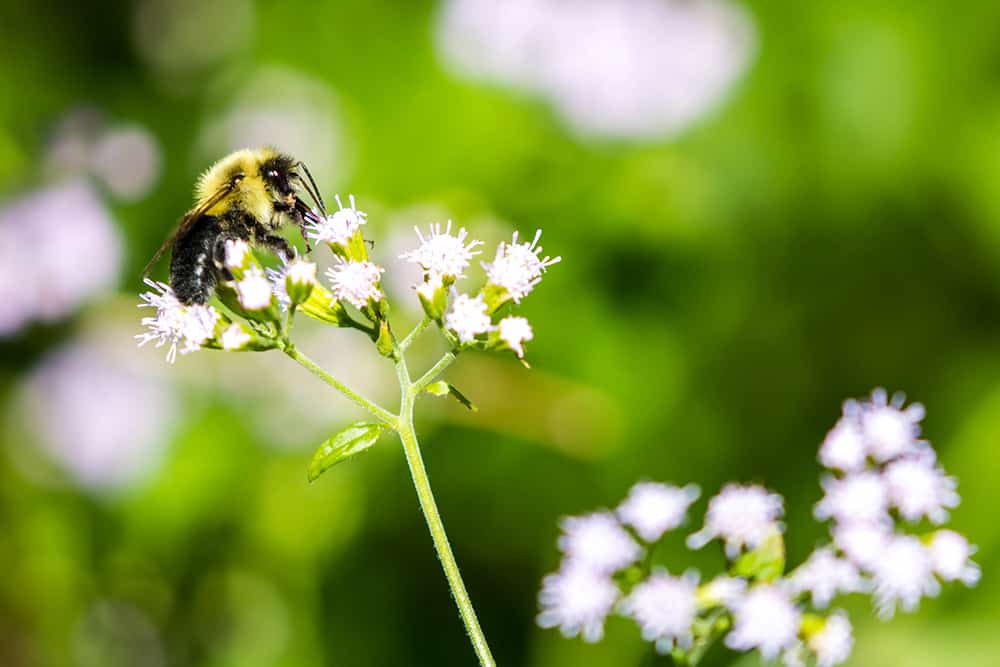Golf course construction begins next week
We’re excited to announce that construction is set to begin on the renovation of the Overton Park golf course starting Monday, January 18. The final day to play a round before closure is this Sunday. Golfers are asked to call the clubhouse at (901) 725-9905 to request a tee time this weekend. The team from King-Collins Golf Course Design will begin placing erosion control materials around the perimeter of the course as early as Saturday.
The project will begin with some work on the edges of the course. In December, Overton Park Conservancy hired surveyors to mark the Old Forest boundary to ensure that work on the golf course would not affect plants in the legally-protected Old Forest State Natural Area. The survey found that in some places, vegetation has encroached 5-10 feet past the Old Forest boundary and into the golf course. Many of the plants in these swaths are non-native shrubs and vines like Japanese honeysuckle and Chinese privet, along with non-native wildflowers like beefsteak plant.

In areas where the vegetation has encroached past the forest boundary and close to golf greens, playable fairways, and tee boxes, contractors will remove this growth with a forestry machine, which is a lighter-impact machine than an earth-moving bulldozer. This machine does not remove soil and therefore prevents erosion by leaving root systems intact and providing the site with a mulch cover. Other areas will be worked by hand to remove invasive shrubs and vines while leaving any valuable native plants like grapevines and elderberry shrubs intact.
Where there is minimal encroachment past the Old Forest boundary and the vegetation does not abut a playable area, the current vegetation will be left intact to ensure continuity of habitat for birds and pollinators. (One example of this is the long edge running north of the #4 green toward the #3 tee box.)
The plant communities on the edge of a forest are critical for species that cross between forest and open habitats. (It’s why the sunny, east-facing edge of the golf course is such an incredible bird habitat.) Over the past decade, weedy growth has eclipsed the golf course boundary and a few of the more aggressive plants, like poison ivy and giant ragweed, have come to dominate this edge. What we’ve noticed while planning for this project is that the structure of this edge is effective: trees in the forest moving down into a layer of shrubs and vines, and then into a low layer of wildflowers. However, the composition is largely non-native (or aggressive, as in the case of poison ivy). Work on the golf course provides the Conservancy with an opportunity to experiment with recreating that structure, but with higher-value native plants.

To that end, we’re working with native horticulture experts and Tennessee Department of Environment and Conservation ecologists to develop a mix of seeds for native plants that grow well in our area. We’ll spread this mix in multiple seasons this year to fill in the areas within the Old Forest boundary where we’ve removed the invasive plants.
Because these edges receive a generous amount of sunlight, we know that something will grow back quickly after we remove the invasives, so we’re excited to encourage the growth of plants that have a high nutritional value for birds and pollinating insects. We’ve heard it said that non-native plants are like feeding pollinators fast food, and native plants are like providing a gourmet meal!
The golf course project will also likely result in the removal of some trees, such as the small crape myrtles on the fairway between holes #3 and #4. Specimen trees, such as the large magnolias in this area and the oaks near the green on hole #1, will be left intact despite being unusual features for a golf course. Course designs normally prioritize as much sunny, open space as possible, and keeping these trees required the architects to modify their original plans for the renovation. We’re grateful that King-Collins was happy to work with the Conservancy staff, including our certified arborist Eric Bridges, to appreciate the value of these trees both as wildlife habitat and as features enjoyed by the larger park user community.
As part of our ongoing park planning process, we are exploring other areas of the park where new trees can be added to compensate for any losses incurred in making the golf course a more playable amenity.
Construction is expected to wrap up in March or April, followed by several months to grow in the grass. Play on the course is expected to resume in the fall, to include the return of the historic Overton Park Open junior golf tournament. This project is a partnership between the City of Memphis Division of Parks and Neighborhoods and Overton Park Conservancy, funded by private donations from Conservancy board members emeritus, park supporters, and golf enthusiasts.
While this course is under construction, golfers are encouraged to explore the City’s other municipal courses at Audubon, Fox Meadows, Galloway, Pine Hill, Riverside, or Whitehaven. For more information on those courses, please visit memphispubliclinks.com.



